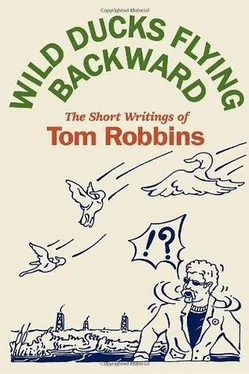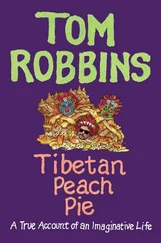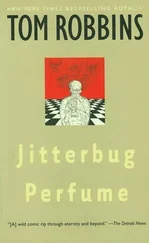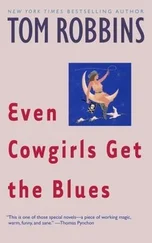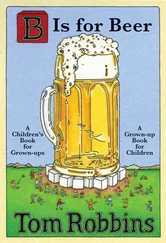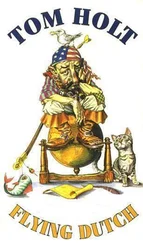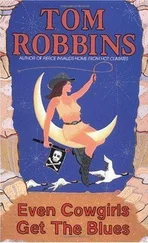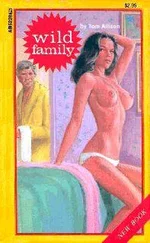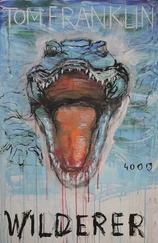Formally, he puts the circle to more pragmatic uses. Its round shape serves to draw the viewer’s eye inward toward a nucleus where it is confronted either by a more finite system of circles that suggest the viewer must look deeper still, or by spikes, sparks, or effluvia, that especially when deployed concentrically, also push pictorial space outward, heightening the illusion of spatial vastness and placing the internal forms in a more communicative relationship with the framing edges.
The square, too, has symbolic overtones. Early Chinese used it to represent the world. It also has been glorified as a sacred portal, and its four corners have served as visual metaphors for air, earth, fire, and water. To Kenney, the square functions chiefly as a container. It limits and directs the emanations of the circles (thereby playing the dominant, or male, role to the circle’s passive, or female, role). It also helps to balance Kenney’s compositions, allowing them to be read, on one level, as studies in symmetry. The plastic dialogue between squares and circles (and occasional rectangles and ellipsoids) is responsible for the dynamic theater of tensions which dominates everything in Kenney’s pictures, even the symmetry.
This pictorial drama reflects an actual drama that is unfolding somewhere “out there” or “in here,” but the nature of the drama cannot be specifically identified. It is either too macrocosmic or too microcosmic for the mind’s eye to bring completely into focus. Kenney is a purveyor of ambiguities, paradoxes, and dualities — all in the service of giving geometric form to the mysterious relationships that exist between everything in the cosmos.
Simultaneously, with the beginning of the “Jungian” period, we have the emergence of Kenney as a masterful and innovative colorist. And the surprise, here, is that while his forms have become more universal, his blossoming palette is uniquely personal.
Neither organic nor synthetic, his colors come entirely from his imagination. While some of our best contemporary painters force us into an encounter with pure color, Kenney’s color seduces us into an encounter with Kenney. Instead of optical dazzle, he offers us subjective illuminations. Although his use of color is far from primitive, it seems innocent and true.
Kenney is a tonal painter. In any one picture, you may find an economy of colors but an extravagance of tones. In a subtle and harmonious way, these tones modify, inflect, inspire, and cancel each other to the point where we do not readily distinguish individual generic colors but rather experience a vast aura of tones in constant, orchestral modulation of each other. This is true even though there frequently are large areas to which only a single tone has been applied. Kenney’s “total color” effect is, therefore, not so much the result of a profusion of closely juxtaposed values as it is the result of a carefully controlled overall radiance . His colors intermingle in the way that gases do; they interact as vapor interacts with light.
Kenney’s primary medium is gouache, a water-soluble pigment which he applies to dampened paper. This technique gives a soft, spreading, almost blurry effect but one which is nonetheless opaque. Such interchangeability of surface qualities — on the one hand translucent and evanescent, on the other, absorbent and dense — creates an illusion of both concreteness and great depth. And despite the softness of the medium, Kenney’s range is such that he can intensify colors to the point where they seem fluorescent.
Observe these paradoxes: Kenney’s color is soft yet intense; his color is cool yet it glows as if afire; it is water-based yet it is alkaline dry; it is rigorous yet it is highly sensual and sometimes very nearly sweet.
While he can — and does — use greens, browns, and yellows, Kenney’s favored hues are reds and blues. What kind of reds and blues? Mixtures of amaranth and orchid, grape and starfish, electricity and high blood pressure. They are like hues perceived through telescopes or microscopes; the colors of sunspots, novae, ionized auroras, and Saturnian rings; of arteries, nerve filaments, viruses, and reproductive cells. In their ambiguity, Kenney’s colors are both intimate and alien. They inspire unconscious connections between entities as close as our own vital organs and as distant as the farthest stars.

This retrospective is far from a finalized statement. At forty-eight, Kenney is alive and well — and hinting at new directions. Consider Lake Gemma, a recent work. In it, the artist turns his attentions to the parallelogram and the effect is as if Josef Albers had emerged, at long last, from the dusty drafting rooms of the Bauhaus to be suddenly bowled over by nocturnal raptures: the quadrilateral becomes poetically charged, bearing witness to the interdependence of spirit and matter, in nature and art. And bearing witness to Kenney’s visual resourcefulness as he persists in his search for Self, which is to say, for higher consciousness.
Painting for Kenney is part of a total life-process. He lives and he paints as freely as possible, resisting any impulse to categorize or solidify. He rarely begins a picture with an idea in mind; rather, when his psychological stirrings become particularly acute, he knows it is time to involve himself in the physical art of applying paint to paper. In contrast to the intellectualized painting that is dominant today, Kenney’s method is almost a ritual — an acting out of mysterious desires, a crystallization of vague urges, a channeling of shadows through a Euclidean grid.
Plato is reported to have said, “God geometrizes.” It would be difficult to name another mortal artist today who puts geometry to such divine purposes as does Leo Kenney — and makes it count on the picture plane.
Seattle Art Museum, 1973
In a society that is essentially designed to organize, direct, and gratify mass impulses, what is there to minister to the silent zones of man as an individual? Religion? Art? Nature? No, the church has turned religion into standardized public spectacle, and the museum has done the same for art. The Grand Canyon and Niagara Falls have been looked at so much that they’ve become effete, sucked empty by too many insensitive eyes. What is there to minister to the silent zones of man as an individual? Well, how about a cold chicken bone on a paper plate at midnight, how about a lurid lipstick lengthening or shortening at your command, how about a styrofoam nest abandoned by a “bird” you’ve never known, how about whitewashed horseshoes crucified like lucky iron Jesuses above a lonely cabin door, how about something beneath a seat touched by your shoe at the movies, how about worn pencils, cute forks, fat little radios, boxes of bow ties, and bubbles on the side of a bathtub? Yes, these are the things, these kite strings and olive oil cans and velvet hearts stuffed with pubic hair, that form the bond between the autistic psyche and the experiential world; it is to show these things in their true mysterious light that is the purpose of the moon.
— Still Life With Woodpecker (1980)
Whether Ken Cory ever read the preceding lines, or if so, whether he completely agreed with them, we cannot know. It is certain, however, that he would have understood them. The relationship between humanity and so-called lifeless objects is often more complex and enigmatic than the connection between humanity and nature. In the shifting psychological shadows of the organic/inorganic trellis, Cory tended his grapes and pressed his wine.
Читать дальше
